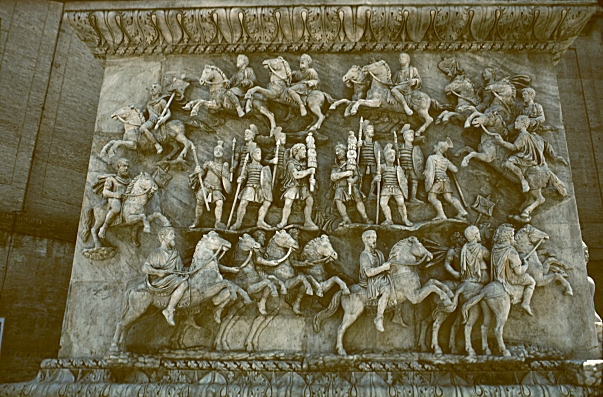
Sometime in april last year i was struggling through a paper on Gustave Courbet and his representation of space in his painting for my early 19th century art class. A "bad boy" in his days, Courbet did some funky stuff with the spatial configuration of perspective elements in this painting (and many other). Diane Kriz the professor said that just because space/perspective is represented differently from what we are used to doesn't mean that it is not represented "untruthfully" or "unrealistically." For there are, she proceeds to explain, countless versions of "truth" out there and one truth-claim is not intrinsically superior to another Unfortunately, in the real world, a history professor gets paid higher than an art history professor, because the former is believed to study "facts" while what the latter studies is called "representations."
In all honesty, that day i remained dubious and still believed there ought to be a certain way to present a certain truth. Although by that semester, my last semester, i had been firmly a product of "Post" schools of thought, begun to question universal truths, and believed beauty, indeed, is in the eye of the beholder (thanks Anthropology), yet to genuinely adknowledge Courbet's representation of space/perspective as being on par with today's perspective rendition still vastly eluded me. Instead, i adopted my professor's ideas, paraphrase them, and mechanically wrote:
...if the classicizing style aims at perfectly constructing the depth and the three-dimensional representation of space in order to reject the pictorial flatness, Courbet instead created his own creative style to carefully render each separate figure in a unique space and at the same time achieve in suggesting the perspective atmospherically, not necessarily linearly. Consequently, the vignette-like quality of the spatial representation of Siesta during the haymaking season stems from Courbet’s attempt to present to the viewer a different system of truth-claim by representing the whole without sacrificing the essence of the part. If the Academic style dictates a certain pre-determined formula, Court does the opposite. He challenged the contemporary conventional representation of space and avoided sacrificing the ability to depict each figure in the pursuit of a perfect “whole.”
As if i had believed it. And with that, i hit the nail on the head, got a good grade, but sadly still did not a clue. As i have started to immerse in such a visually intensive activity of my second degree and read a few theoretical texts on photography and Renaissance art, however, i began to understand Courbet a bit more and take one step back from my 20th century shell. Hell, roman architectural sculptors weren't even bothered. Chinese landscape painters do not glory the same optical accuracy that Western viewers do today. They stack pictorial elements, one upon another, where the higher means the farther away. More importantly, although invented and popularized in the Renaissance, some Renaissance paintings themselves are not even "accurate" by their own standard.


It's interesting to see how much our perception and recognition of truth - perspective, in this case - is conditioned by the past, a certain past. When making perspectives for design concepts, on photoshop, I myself operate within this constraining state of mind, paying attention to the proportional relationship, trying to get every element "in proportion" which in turn is dictated by perspective!

Interestingly, some graphic designers don't even care; they shouldn't have to care. Like Courbet, they probably pay attention to particular experiences rather than the united whole and are not unsettled that the final image does not look accurate scale-wise, whether or not they deconstruct the whole epistemology of spatial representation the way i do now. The result looks kind of out of scale, ahead of its time, and thus "avant-garde," which, despite potential false promise, is liberating, hopeful and visionary.

To quote Erwin Panofsky, "Renaissance perspective was neither natural nor inevitable; rather it was the historical product of a society that valued detachment more than immersion; order rather than flux; regularity instead of discontinuity; and structure over experience." Courbet may be bad but he certainly is not untruthful.








1 comment:
if i did watch gossip girl, it would be more crap to doodle O_O noooo. i like the new slideshow sunsets!
Post a Comment